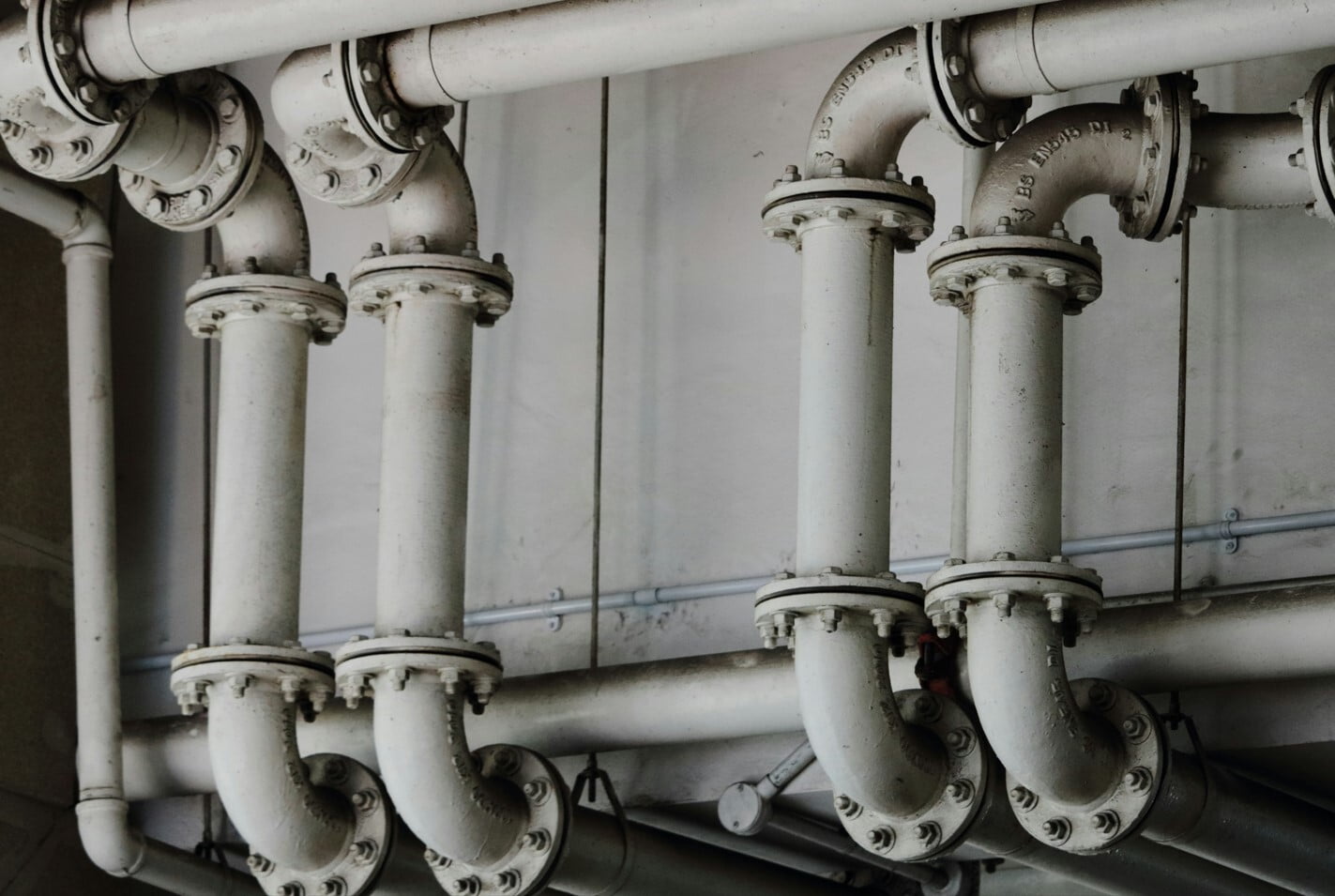
Understanding the various types of pipe for plumbing and their respective pros and cons is crucial for homeowners, builders, and renovators. The right choice in plumbing materials not only ensures efficient water distribution and waste management but also impacts the longevity and safety of the plumbing system. This comprehensive guide delves into the world of plumbing pipes, offering insights into the most common types used in modern construction.
Types of Pipes Used in Plumbing
Types of Pipes Used in Plumbing
1. Copper Pipes
1. Copper Pipes
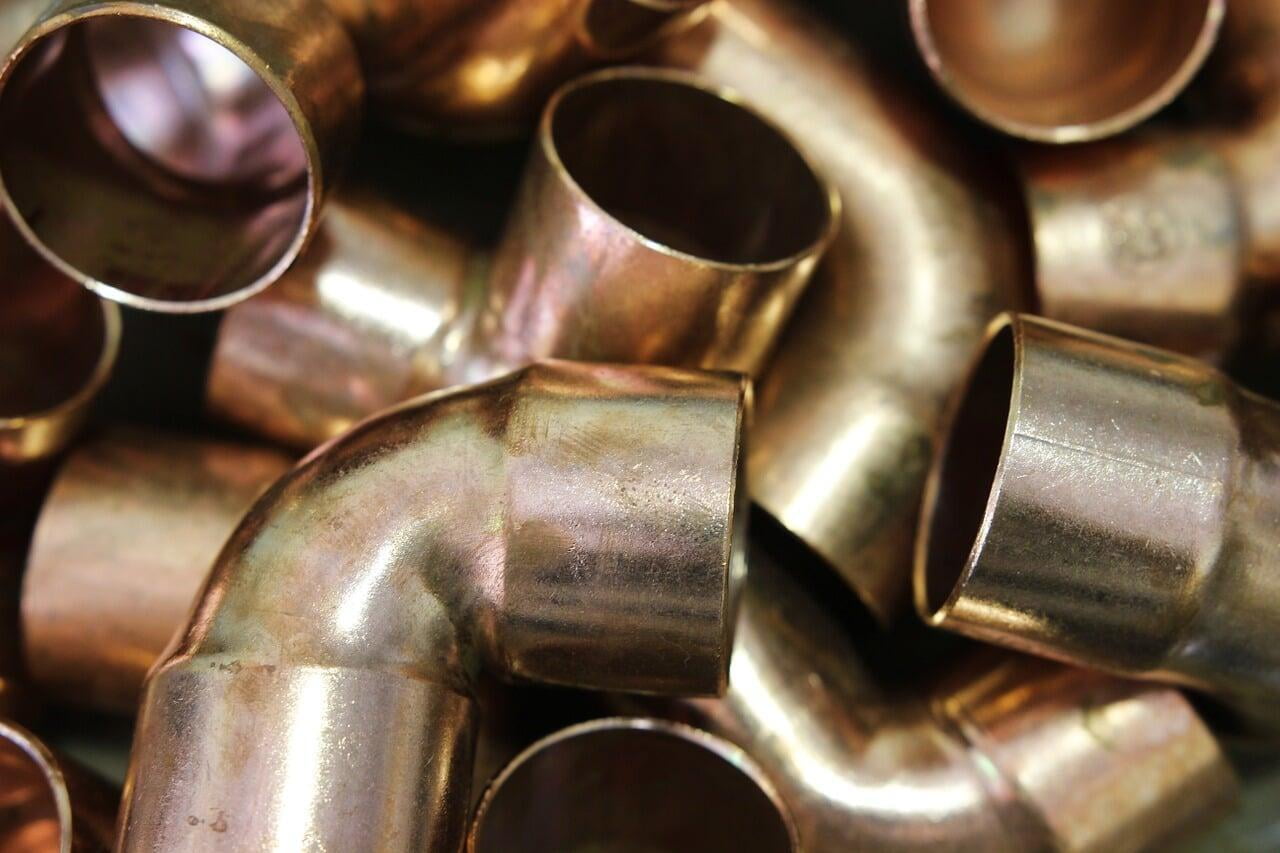
Copper pipes, the most commonly used hard pipes for water supply in both residential and commercial settings, come in two main types: rigid and flexible. Rigid copper pipe is strong and durable, making it ideal for permanent water lines in buildings but requires elbow joints to change direction, as it can only be bent slightly with special tools. Flexible copper pipe, in contrast, offer greater adaptability. It can be easily bent to navigate around obstacles, eliminating the need for additional fittings, which makes them suitable for areas with complex layouts or limited space.
Pros
- Copper pipes withstand pressures up to 1000 psi and extreme temperatures.
- Highly resistant to corrosion, ensuring a prolonged lifespan.
- Lightweight nature facilitates easier handling, especially in confined spaces.
- Being a naturally occurring metal, copper is eco-friendly.
Cons
- Copper pipe can have a higher price point compared to other pipe materials.
- Copper piping cannot be utilized in confined spaces where plastic piping would be more practical.
Recommended Applications
- Ideal for main water lines and hot water supply lines.
- Copper plumbing pipes can also be utilized for underground plumbing since they possess resistance to rust and leakage.
2. Galvanized Steel Pipe
2. Galvanized Steel Pipe
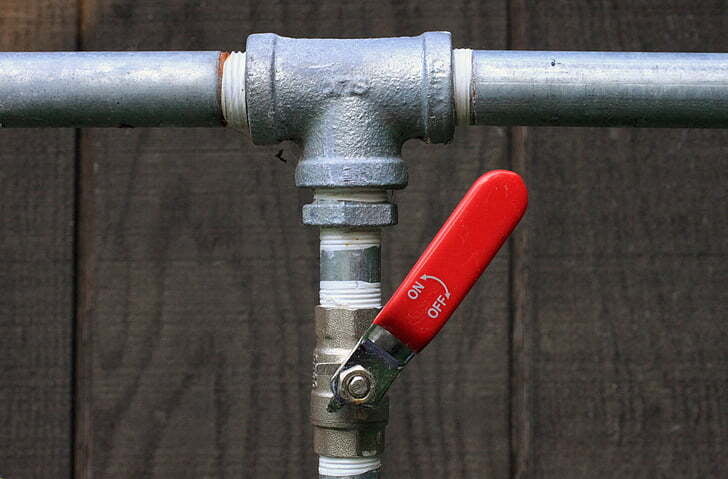
Galvanized steel pipes, characterized by their protective zinc coating to prevent corrosion and rust, were once commonplace in residential plumbing, particularly for fixtures like sinks, showers, and tubs. However, experts now often recommend replacing galvanized pipe in older homes due to the risk of water contamination from the eroding zinc coating. The usage of galvanized pipe has significantly decreased, largely because more durable and less corrosive materials such as PVC and PEX have become the preferred choices in modern plumbing installations.
Pros
- Galvanized steel pipe can lasts up to 70 years.
- Zinc coating provides excellent rust protection.
- Cost-effective compared to alternatives like copper.
Cons
- Prone to Corrosion
- Not suitable for hot water
Recommended Applications
- Outdoor constructions and structural applications.
3. Polyvinyl Chloride (PVC) Pipes
3. Polyvinyl Chloride (PVC) Pipes
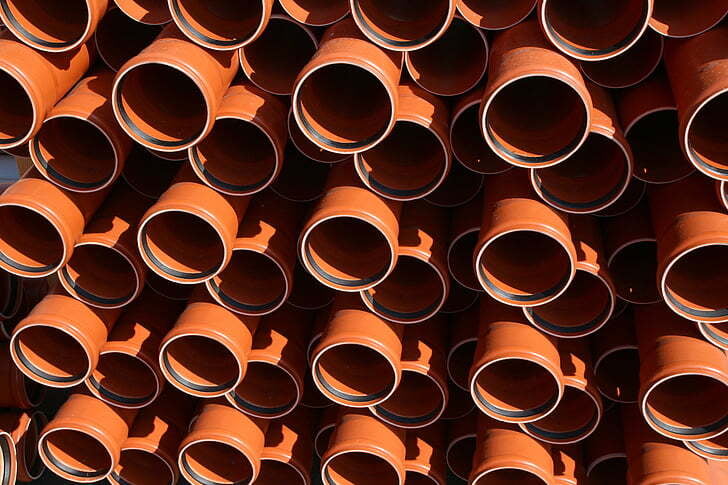
Polyvinyl Chloride, more commonly known as PVC pipe, is a type of plastic that is widely used in the construction industry, including for pipes. PVC pipes are recognized for their versatility, durability and affordability. PVC plumbing pipe, while meeting American National Standards Institute standards, is banned in some states due to concerns about contaminating drinking water with harmful chemicals.
Pros
- Corrosion Resistance
- PVC pipe facilitates easy transportation and installation.
- Economical choice compared to other pipes.
Cons
- PVC pipe may warp under high temperatures.
- PVC pipes are prone to becoming brittle over time.
Recommended Applications
- Residential plumbing, sewage systems, and irrigation systems.
4. Chlorinated Polyvinyl Chloride (CPVC) Pipes
4. Chlorinated Polyvinyl Chloride (CPVC) Pipes
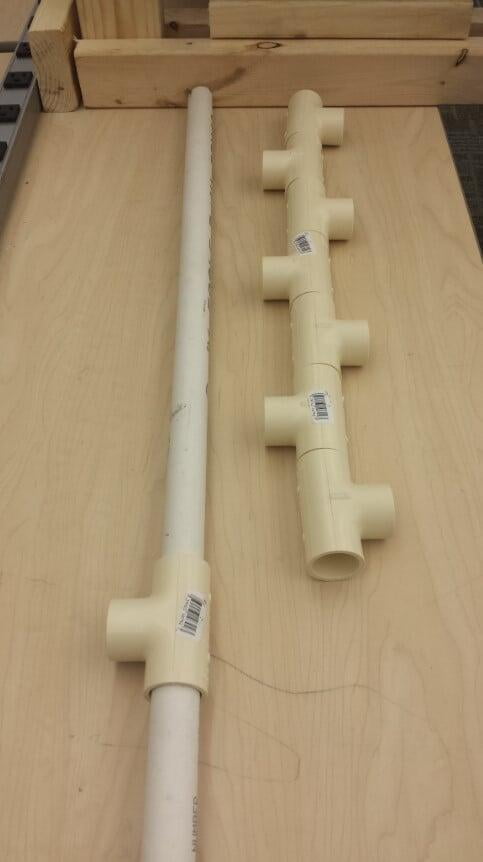
Photo by: Asadabbas, CC BY-SA 4.0, via Wikimedia Commons
Chlorinated Polyvinyl Chloride, commonly referred to as CPVC, is a thermoplastic produced by chlorination of polyvinyl chloride (PVC) resin. Known for its versatility and resistance to high temperatures, CPVC is often used in hot and cold water distribution systems.
Pros
- Resistant to corrosion and scale buildup.
- Durable and budget-friendly option.
Cons
- May split if subjected to freezing temperatures.
- Higher cost compared to PVC pipes
Recommended Applications
- Hot and cold water distribution, fire sprinkler systems, and industrial liquid handling.
5. Cross-Linked Polyethylene (PEX) Pipes
5. Cross-Linked Polyethylene (PEX) Pipes
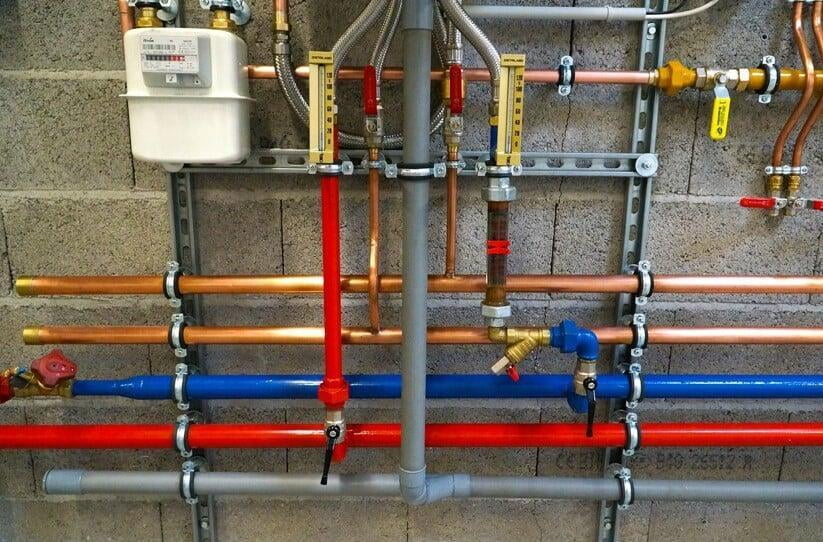
Photo by: Asadabbas, CC BY-SA 4.0, via Wikimedia Commons
Cross-Linked Polyethylene, or PEX pipe, is a type of high-density polyethylene (HDPE) that has been altered at the molecular level to improve its properties. PEX pipes are commonly used for water supply lines and typically come in two colors: red for hot and blue for cold.
Pros
- PEX can be bent around corners, reducing the need for elbow fittings and making installation easier.
- Less likely to burst if the water inside them freezes, thanks to their flexibility.
- Resistant to scale and chlorine, PEX piping prevents pipe degradation and ensures longevity.
- PEX pipes can be used for both hot and cold water applications.
Cons
- PEX is not suitable for outdoor use as it can degrade when exposed to ultraviolet light.
- There have been concerns about the potential for chemicals to leach from the plastic into the water, particularly if the water is heated.
Recommended Applications
- Excellent for water supply lines in tight spaces.
6. ABS Pipes
6. ABS Pipes
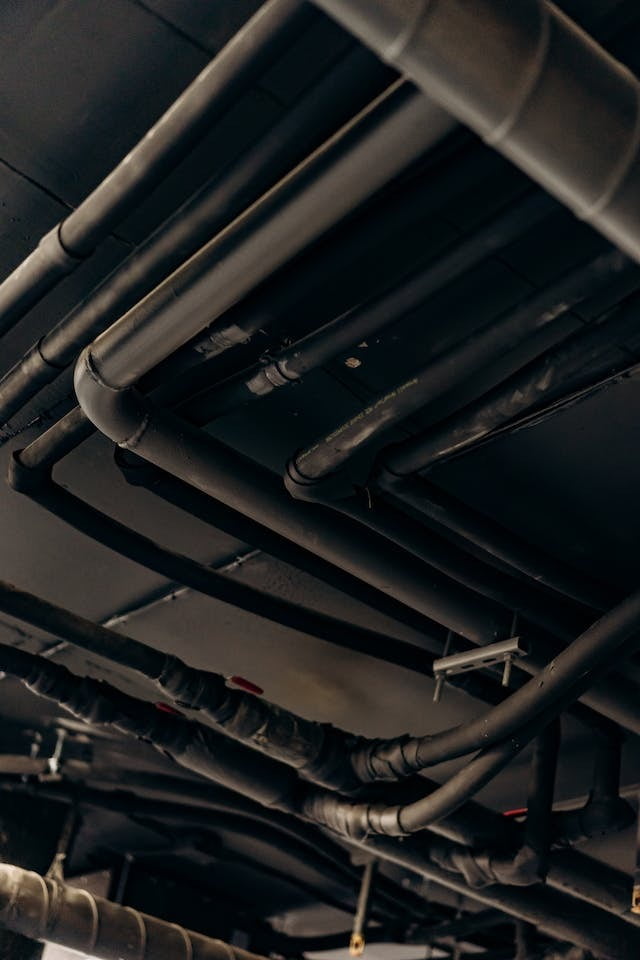
Acrylonitrile Butadiene Styrene, more commonly known as ABS pipe, is a type of plastic that is extensively used in the manufacturing of pipes and fittings. This thermoplastic resin is produced through extrusion and injection molding processes. The characteristic black color of ABS pipes is a distinguishing factor that sets it apart from other types of plumbing pipe materials.
Pros
- ABS pipes are lightweight, making them easier to install compared to traditional metal pipes.
- These pipes are known for their strength and resistance, making them less likely to burst or crack under pressure.
- ABS pipes are generally less expensive than other types of plastic pipes.
Cons
- ABS pipe contains bisphenol A (BPA), a chemical that has raised health and environmental concerns.
- ABS pipe can deform under high temperatures, limiting its use in certain applications.
Recommended Applications
- ABS pipes are commonly used in drain-waste-vent pipe systems and sewer systems. Their resistance to shock makes them an excellent choice for buildings located in colder climates where pipes are more susceptible to freeze and burst.
7. Cast Iron Pipe
7. Cast Iron Pipe
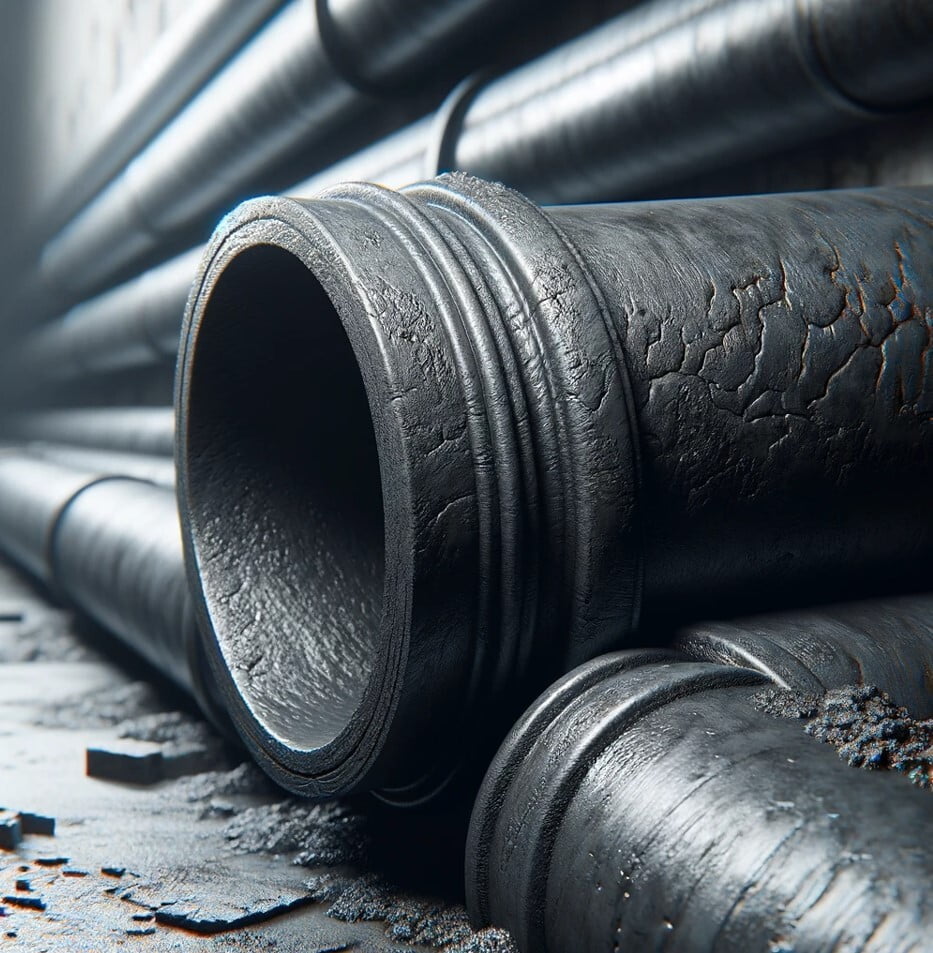
Cast iron pipe is a type of plumbing pipe that have been used in construction for hundreds of years. It is made from a heavy-duty metal, cast iron, which is known for its strength and durability. Unlike plastic pipes such as PVC pipe or ABS pipe, or metal pipes such as copper or steel, cast iron pipe is incredibly robust and can withstand high pressures and heavy loads.
Pros
- Extremely durable and can last up to 100 years if properly maintained.
- Due to its density, cast iron piping effectively reduces noise from flowing water.
- Non-combustible, making it a safe choice for buildings where fire safety is a priority.
- Cast iron pipes are resistant to deformation and can withstand extreme conditions.
Cons
- More expensive than other types of plumbing pipes, both in terms of the material itself and the cost of installation.
- The installation process is labor-intensive and requires skilled workers.
- Over time, cast iron can rust if not properly maintained, leading to potential leaks.
- The heaviness of cast iron pipes can make them difficult to handle and install.
Recommended Applications
- Commercial buildings, multi-story residential buildings, and municipal systems.
8. Polybutylene Pipes
8. Polybutylene Pipes
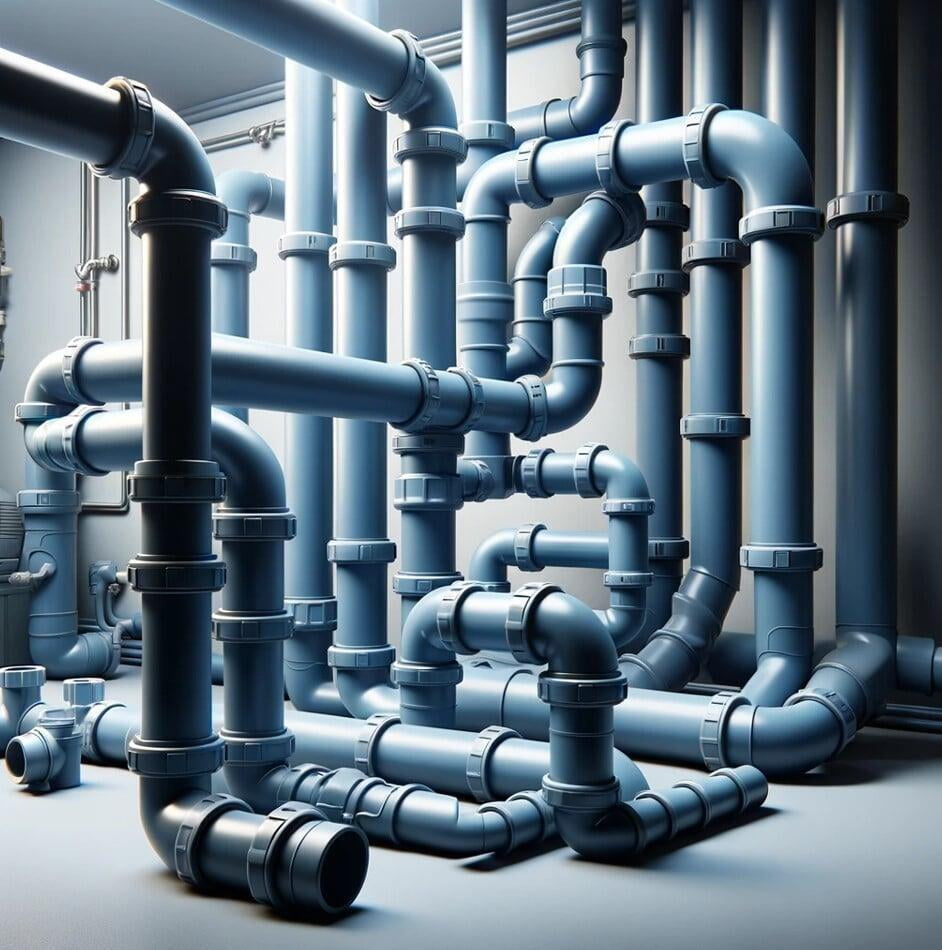
Polybutylene pipes, often referred to as PB pipes, are a form of plastic resin piping that were widely used in the plumbing industry from the late 1970s until the mid-1990s. More durable materials such as PEX and copper have largely replaced polybutylene in many plumbing systems. Due to its known issues with degradation and limited lifespan, polybutylene pipes should not be used in situations where long-term durability is a priority.
Pros
- One of the primary benefits of polybutylene pipes is their cost-effectiveness. The materials themselves are cheaper than many alternatives.
- The flexibility of polybutylene pipes allows for easier installation, especially in tight spaces where rigid pipes would be challenging to fit.
- Polybutylene pipes do not corrode over time, making them an attractive long-term solution.
Cons
- Prone to degradation, leading to leaks.
- Shorter lifespan compared to other materials.
- Issues difficult to detect until problems arise.
Recommended Applications
- Residential properties, particularly for budget-conscious projects.
9. High-density Polybutylene
9. High-density Polybutylene
High-density polybutylene, also known as HDPE (High-Density Polyethylene), is a type of flexible plastic pipe often used in plumbing systems. HDPE does not rust or corrode. It is also more flexible than PVC or copper pipes, which can make installation easier in certain settings.
Pros
- HDPE pipes are corrosion resistant, making them ideal for underground installations.
- This material can bend and flex, reducing the need for multiple fittings during installation.
- HDPE has excellent durability and can withstand both high pressure and temperature variations.
- High-density polybutylene is generally less expensive than other types of plumbing pipes.
Cons
- Although durable, HDPE pipes do have a finite lifespan and will eventually need to be replaced.
- HDPE can deform under high temperatures, limiting its use in certain applications.
Recommended Applications
- Municipal water and wastewater systems, irrigation networks, and industrial piping systems.
FAQ's
Is it possible to convert pipes into different types?
Is it possible to convert pipes into different types?
Pipes can be converted to other types using appropriate adapters. These adapters, also known as fittings or connectors, come in various forms and materials, allowing for a wide range of possibilities in terms of pipe conversion.
For instance, if you have a copper pipe but need to connect it to a PVC pipe, you can use a copper-to-PVC adapter. Similarly, if you have a galvanized steel pipe that needs to be connected to a PEX pipe, a suitable galvanized-to-PEX adapter would be the solution.
It's important to note that while adapters make it possible to convert one type of pipe to another, they should be used correctly to ensure the integrity of the plumbing system.
What Is the Difference Between CPVC and PVC Pipe?
What Is the Difference Between CPVC and PVC Pipe?
The primary difference between PVC pipes and CPVC pipes lies in their resistance to heat. While PVC pipes are susceptible to warping under high temperatures, CPVC pipes are thermally resistant, making them suitable for hot water distribution systems. This significant difference is a result of the additional chlorination process that PVC undergoes to become CPVC, enhancing its temperature resistance.
Which is better PVC or Steel pipe?
Which is better PVC or Steel pipe?
PVC pipes are great for residential and non-pressure industrial use. In contrast, steel pipes are strong, durable, and can withstand high-pressure, high-temperature conditions, making them suitable for industrial and commercial applications. However, they are prone to corrosion if not properly protected. Neither type is inherently 'better'; the best choice depends on your specific plumbing needs.
ABS Pipe vs PVC Pipe
ABS Pipe vs PVC Pipe
ABS pipes are commonly used for drains, sewer lines, and vents in residential properties, while PVC pipes are widely used for water supply lines in both residential and commercial buildings.
What Type of Pipe Should be Used for the Main Water Line?
What Type of Pipe Should be Used for the Main Water Line?
Generally, copper pipes are a popular choice for main water supply lines due to their strength and reliability. PEX pipes can also be a good option as they are flexible, making them easier to install in tight spaces.
What is the Strongest Plumbing Pipe?
What is the Strongest Plumbing Pipe?
Copper pipes are considered to be the strongest plumbing pipe due to their durability and resistance to corrosion. However, PEX pipes have been gaining popularity as they are also very strong and have the added benefit of being flexible, making them less likely to burst or break under pressure.
What Are the Types of Plastic Pipes for Plumbing
What Are the Types of Plastic Pipes for Plumbing
The types of plastic pipes commonly used for plumbing include Polyvinyl Chloride (PVC) pipes, Chlorinated Polyvinyl Chloride (CPVC) pipes, Polyethylene (PE) pipes, and Cross-Linked Polyethylene (PEX) pipes.
Which Pipe is Best for Home Plumbing?
Which Pipe is Best for Home Plumbing?
The best pipe for home plumbing will depend on various factors such as budget, specific needs of the plumbing system, and local building codes.
Some commonly used options for home plumbing include copper pipes, PEX pipes, PVC pipes, and CPVC pipes. It's important to consult a professional plumber for advice on the best type of pipe for your specific home plumbing needs.
Which Type of Plumbing Pipes are Best for use in the Bathroom?
Which Type of Plumbing Pipes are Best for use in the Bathroom?
Some common options include PVC pipes, CPVC pipes, PEX pipes, and copper pipes. PVC and CPVC pipes are budget-friendly and easy to install, but may not be suitable for hot water supply lines. PEX pipes are flexible and resistant to freezing, making them a good option for cold climates. It's important to consider the location of your bathroom and its plumbing needs before deciding on the best type of pipe to use. Consulting with a professional can also help determine the most suitable option for your specific bathroom plumbing needs.
The choice of plumbing pipes greatly depends on the specific use case, the location, and the budget. PVC, CPVC, PE, and PEX are all viable options, each with its distinct advantages. PVC and CPVC pipes are budget-friendly and easy to install, while PE and PEX pipes offer durability and flexibility. Copper pipes, while not plastic, are also a commonly used option for home plumbing due to their strength and resistance to corrosion. Ultimately, it's crucial to consult with a professional plumber to identify the most suitable type of pipe for your specific plumbing needs, whether it's for a whole house, a bathroom, or a specific climate.

